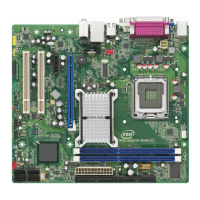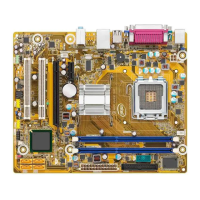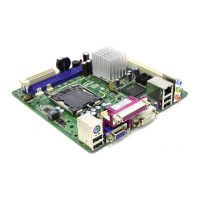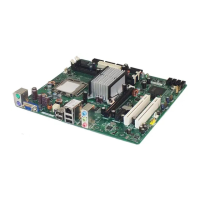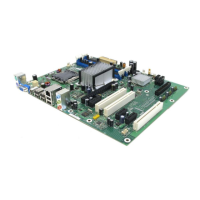Product Description
21
1.6.2 USB
The board supports up to eight USB 2.0 ports, supports UHCI and EHCI, and uses
UHCI- and EHCI-compatible drivers.
The ICH7 provides the USB controller for all ports. The port arrangement is as
follows:
• Four ports are implemented with stacked back panel connectors
• Four ports are routed to two separate front panel USB headers
For information about Refer to
The location of the USB connectors on the back panel Figure 9, page 43
The location of the front panel USB headers Figure 10, page 44
1.6.3 Serial ATA Interfaces
The board provides four Serial ATA (SATA) connectors, which support one device per
connector.
1.6.3.1 Serial ATA Support
The board’s Serial ATA controller offers four independent Serial ATA ports with a
theoretical maximum transfer rate of 3 Gbits/sec per port. One device can be installed
on each port for a maximum of four Serial ATA devices. A point-to-point interface is
used for host to device connections, unlike Parallel ATA IDE which supports a
master/slave configuration and two devices per channel.
For compatibility, the underlying Serial ATA functionality is transparent to the
operating system. The Serial ATA controller can operate in both legacy and native
modes. In legacy mode, standard IDE I/O and IRQ resources are assigned (IRQ 14
and 15). In Native mode, standard PCI Conventional bus resource steering is used.
Native mode is the preferred mode for configurations using the Windows* XP
operating system.
NOTE
Many Serial ATA drives use new low-voltage power connectors and require adapters or
power supplies equipped with low-voltage power connectors.
For more information, see: http://www.serialata.org/
For information about Refer to
The location of the Serial ATA connectors Figure 10, page 44
